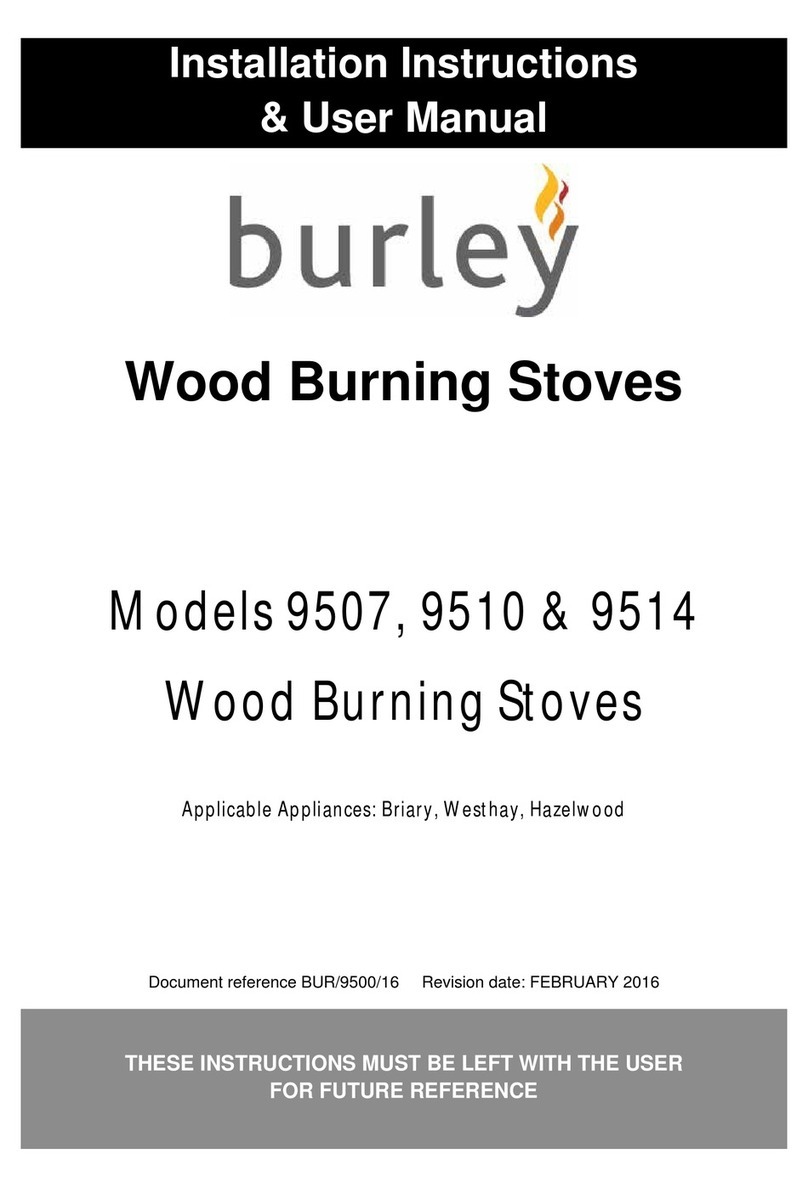
Page 7 of 20
Installation Instructions
When installing these appliances, all local regulations, including those referring to national and
European Standards need to be complied with.
This manual covers the appliances: Burley Models: 9104-C, 9105-C, 9108-C, 9304-C, 9305-C,
9307-C, 9308-C. 9404-C, 9405-C and 9408-C
The nominal space heating output is:
9104-C & 9304-C 9404-C: 4Kw, 9105-C & 9305-C 9405-C: 5Kw, 9108-C & 9308-C 9408-C:
8Kw 9307-C: 7kW
Any of the above appliances should be installed by an installer registered with a competency
scheme (i.e. HETAS/ELECSA England & Wales), conforming to Building Regulations Part J and
the installation must be registered with the local council building control department.
Failure to comply with the above renders all guarantees and liabilities of the
manufacturer null and void.
By carefully following the instructions below we are certain that you will enjoy many years of
warmth and enjoyment from your new Burley Fireball and Firecube Stove.
The manufacturer will not guarantee or accept liability for any problem that arises unless a local
authority building control certificate has been completed and a valid receipt or proof of purchase is
presented from the approved supplier.
The appliances should not be fitted closer to combustible materials, e.g. wooden fire surround or
stud wall, than is shown in the table on page 5.
When fitted against a wall made of combustible material e.g. a wooden stud wall with
plasterboard, unless a 75mm thick non-combustible material is used as a barrier, extra non-
combustible material should be fitted behind the stove if the distance from the wall is less than
shown. When fitted inside a masonry or similar non-flammable material recess, e.g., fireplace
opening, there is no minimum distance; although we would advise a minimum of 50mm from any
surface to allow for convection.
The Clean Air Act 1993 and Smoke Control Areas
Under the Clean Air Act local authorities may declare the whole or part of the district of the
authority to be a smoke control area. It is an offence to emit smoke from a chimney of a building,
from a furnace or from any fixed boiler if located in a designated smoke control area. It is also an
offence to acquire an "unauthorised fuel" for use within a smoke control area unless it is used in
an "exempt" appliance ("exempted" from the controls which generally apply in the smoke control
area).
The Secretary of State for Environment, Food and Rural Affairs has powers under the Act to
authorise smokeless fuels or exempt appliances for use in smoke control areas in England. In
Scotland and Wales this power rests with Ministers in the devolved administrations for those
countries. Separate legislation, the Clean Air (Northern Ireland) Order 1981, applies in Northern
Ireland. Therefore it is a requirement that fuels burnt or obtained for use in smoke control areas
have been "authorised" in Regulations and that appliances used to burn solid fuel in those areas
(other than "authorised" fuels) have been exempted by an Order made and signed by the
Secretary of State or Minister in the devolved administrations.
Further information on the requirements of the Clean Air Act can be found here:
https://www.gov.uk/smoke-control-area-rules. Your local authority is responsible for implementing
the Clean Air Act 1993 including designation and supervision of smoke control areas and you can
contact them for details of Clean Air Act requirements
































